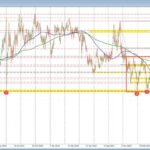Unexpected Drop in US Producer Price Index: What It Means for Inflation and the Economy
Tháng 4 11, 2025
USD/CHF Currency Pair: Navigating Downward Pressure Amid Economic Uncertainty
Tháng 4 11, 2025Insights from Susan M. Collins on the Current Economic Landscape and the Federal Reserve’s Stance
Recent remarks from Susan M. Collins, President of the Federal Reserve Bank of Boston, illuminate the complexities of the current economic landscape and highlight the Federal Reserve’s strategic approach to monetary policy. Collins paints a picture of an economy marked by solid conditions yet shrouded in uncertainty, particularly regarding inflation and economic activity.
Solid Economic Conditions Amidst Uncertainty
In her discussions, Collins asserts that the economy entered the first quarter in relatively robust shape. However, she underscores that the outlook is tempered by significant uncertainties. These uncertainties primarily stem from inflationary pressures and fluctuating economic activity, which pose risks to sustained growth. This duality—strong foundational conditions coupled with unpredictable variables—creates a challenging environment for policymakers who must navigate these complexities to foster economic stability.
The Role of Supply Factors in Economic Activity
Collins emphasizes that supply factors are critical in bolstering economic activity while helping to mitigate inflation. Key elements such as increases in labor supply and productivity growth are instrumental in achieving this balance. However, the landscape is not without its challenges. The emergence of new supply issues, particularly those stemming from tariff-induced inflation, could pose substantial risks to economic performance. As Collins notes, these rising tariffs could have a deeply unsettling impact, potentially leading to a scenario where inflation rates continue to escalate and burden consumers.
Current Stance on Monetary Policy
When discussing monetary policy, Collins advocates for a cautious approach, stating that the current policy stance is effectively situated to accommodate a variety of potential economic outcomes. By suggesting a sustained hold on the prevailing policy, she reflects a strategic position that acknowledges both the need for flexibility and the ramifications of incoming economic data. This is crucial as any shifts in the economic conditions may necessitate swift policy adjustments to avert longer-term consequences. Investors should also be cautious of their strategies; as emphasized in a blog on top investment mistakes to avoid in 2023, maintaining a disciplined approach is critical during turbulent times. Read more here.
Inflation Risks and Their Implications
Collins also raises the alarm regarding inflation risks, particularly emphasizing how tariffs are projected to drive core inflation above 3% this year. Such an upward movement in inflation could delay any anticipated interest rate cuts, which would further complicate the economic recovery. Keeping inflation expectations stable becomes paramount in such a context, as fluctuations in inflation can deeply influence consumer behavior and investment decisions. The lasting impact of inflation highlights the importance of avoiding common investment pitfalls, an insight shared by Barry Ritholtz, particularly when navigating such an uncertain environment. Learn more about these investment mistakes.
Navigating Economic Uncertainty
The overarching theme in Collins’ commentary is the omnipresent economic uncertainty. The potential for a “wait-and-see” attitude among stakeholders introduces another layer of difficulty for policymakers. As stakeholders grapple with the unpredictable economic environment, their hesitance to make decisive moves could dampen demand, thereby complicating recovery efforts. This intricate interplay between policy decisions and stakeholder confidence will continue to shape the Federal Reserve’s approach as it navigates these turbulent waters. Understanding these dynamics is further enhanced by examining global economic factors, such as China’s strategic moves in response to international trade tensions. Explore these strategies here.
In conclusion, Susan M. Collins’ insights shed light on the current economic conditions and the delicate balancing act required in monetary policy decision-making. As the Federal Reserve contemplates future actions, the importance of addressing both inflationary pressures and supply challenges will be crucial in steering the economy towards stability and growth. Keep an eye on forthcoming economic data, as it may significantly influence the Fed’s next moves.
